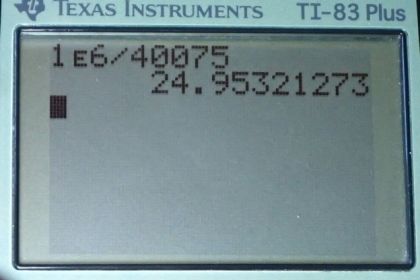Question
The factor of in the range of intensities to which the ear can respond, from threshold to that causing damage after brief exposure, is truly remarkable. If you could measure distances over the same range with a single instrument and the smallest distance you could measure was 1 mm, what would the largest be?
Final Answer
This equivalent to measuring the distance around the Earth 25 times.
Solution video
OpenStax College Physics for AP® Courses, Chapter 17, Problem 55 (Problems & Exercises)

vote with a rating of
votes with an average rating of
.
Calculator Screenshots
Video Transcript
This is College Physics Answers with Shaun Dychko. If you had some fictitious measuring device for measuring length that could have a top-end of its range 12 orders of magnitude greater than the bottom end of its range. Then assuming that the smallest thing you can measure is a millimeter which one times ten to minus three meters then the largest the distance you can measure would be ten to the 12 multiplied by that which ends being one times ten to the six kilometers. And to give some perspective on that distance, the distance around the earth is only 40075 kilometers. And so that top end of this distance that this thing can measure would be 25 times the distance around the earth.
